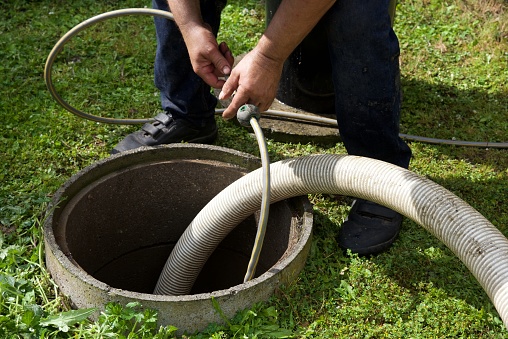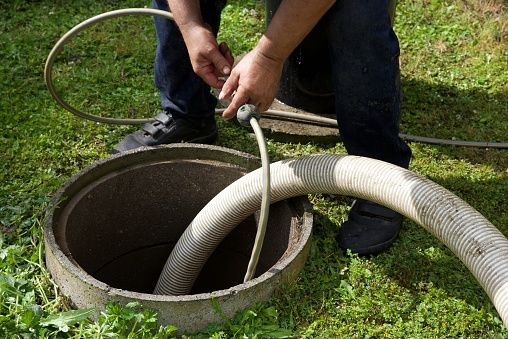While septic tanks may not be excellent conversation starters at dinner parties and other social gatherings, but they are an essential part of any establishment or house.
Septic systems are underground wastewater treatment structures that treat wastewater generated by bathrooms, drains, and laundry plumbing. A septic system contains a drain field or a soil absorption field, as well as a septic tank. The basic function of a septic tank is to “digest” or break down organic matter and separate the floatables, such as grease and other greasy materials, from the sinkable.
This article with cover what you need to know about septic tanks.

Photo Courtesy: Unsplash
Standard Size of Septic Tanks in the Philippines
If your home’s septic tank is too small for your needs, it can’t to handle the amount of waste. This can cause problems like foul odors, flooding, and blocked pipes.
You will also have problems if your septic tank is too large. Without the right volume of wastewater flowing through it, a septic tank that is too large will not function properly. If your septic tank is too huge for your home, you won’t have enough liquid needed to create the bacteria that helps the septic tank break down solid waste.
The three chamber septic tank will measure 3.1 meters (10 feet) by 1.9 meters (6 feet) and will be 2.1 meters deep (almost 7 feet).
Septic tanks are usually rectangular and measure about 5 feet by 8 feet in size. Septic tank components, including the lid, are usually buried between 4 inches and 4 feet underground in most circumstances.
# Bedrooms | Home Square Footage | Tank Capacity |
1 or 2 | Less than 1,500 | 750 |
3 | Less than 2,500 | 1,000 |
4 | Less than 3,500 | 1,250 |
5 | Less than 4,500 | 1,250 |
Source: AnsersToAll.com
Formula to calculate the septic tank capacity in gallons:
3.14 x radius squared x depth (all in feet) = cubic capacity. Cubic capacity x 7.5 = gallons capacity.
RELATED: 10 Useful Types of Pipes and the Latest Plumbing Innovations
Factors to Consider When Determining the Size of Your Septic Tank
Here are some criteria that go into choosing septic tank sizes; keep them in mind as you hunt for the best septic tank for your home and business.
Toilet Water Use
The toilet accounts for a sizable portion of the wastewater produced.
Consider the number of times each individual flushes the toilet each day to get a better picture of water usage. On average, each person is expected to flush four times.
The amount of water used by the toilet is also significant. Per flush, most ordinary toilets store roughly 6 liters of water. For dual flush toilets, this is less, around 4.5 liters.
Bathroom Water Usage
Bathing is necessary, and this adds to wastewater production. You’ll need to figure out how many showers each member of the family takes on average to get a sense of how much water they use.
A single shower per day may be plenty for some. Others have several showers. Find out what the average is. The average shower length is now also in focus. The normal shower lasts roughly 10 minutes in most circumstances.
Other factors to consider include the total number of baths taken in a week and the flow rates of showerheads. All of this provides a picture of water consumption or use in the bathroom, which is used to determine the size of the septic tank.
Dishwashing
Dishwashing also consumes or adds a significant volume of water to the septic tank.
The amount of times you hand wash dishes each day is one detail to be concerned about. It’s also crucial to know how long it takes for water to run while dishes are being washed in minutes.
With dishwashers, you’ll want to think about how many times you’ll use it in a week. An average dishwasher uses roughly 25 liters of water per load, which gives you a better idea of water usage.
Is yours a little different? If that’s the case, you just need to supply the information that pertains to your situation.
Waters Taps Use
Water taps are used for several reasons, ranging from brushing your teeth, shaving, face washing, and so on. As a result, data on the number of times each household member uses the water tap is required.
It could take anything from a minute to several minutes for the tap to be used each time. As a result, offer statistics on the average number of minutes that such taps run with each use.
Lawn Use
If you have a lawn, you probably water it daily. Add information on how many times per week you irrigate your lawn.
When assessing water use, the time spent watering is also significant. It will also be required to give data on how frequently you use your outdoor water taps.
Laundry Consumption
Laundry is one of the main sources of water in a septic tank. To figure out how big a septic tank to put in, you’ll need to know how much water you use for laundry.
The amount of loads carried out by each household member every week is factored in.
On average, each household member should do roughly 7 loads of laundry every week. It’s also important to consider the type of washing machine you have. Top-loading washers use roughly 50 liters of water per load.
RELATED: 8 Most Common Plumbing Problems and Plumbing Tools
Different Septic Tank Design
Septic system design and size can vary widely from neighborhood to neighborhood, and even across the country, due to a lot of considerations. Aspects to consider include household size, soil type, site slope, lot size, proximity to sensitive water bodies, weather conditions, and even municipal legislation.
The ten most common septic system types are listed below.
Septic Tank
A watertight underground tank constructed and built to receive and partially treat raw sanitary wastewater from households. Heavy solids sink to the bottom of the tank, while grease and lighter materials float to the top. They discharge the wastewater to the drain field for additional treatment and dispersal while the sediments stay in the tank.
Conventional System
A decentralized wastewater treatment system comprises a septic tank and a trench or bed subsurface wastewater infiltration system (drain field). A typical septic system is commonly built in a single-family home or small business.
Chamber System
For over 30 years, gravel-free drain fields have been widely used in several areas, and they have largely replaced gravel systems as a standard technology. Examples include open-bottom chambers, fabric-wrapped tubes, and synthetic materials such as expanded polystyrene media. Gravel-free systems can be created using recycled materials, lowering carbon emissions significantly.
Drip Distribution System
Drip distribution is a method of effluent dispersal that can be used in several drain fields. The drip distribution system does not require a large mound of dirt because the drip laterals are inserted into the top 6 to 12 inches of soil. The disadvantage of the drip distribution system is that it demands the installation of a large dosage tank after the septic tank in order to transfer wastewater to the drip absorption region in a timed dose. Additional components, such as electrical power, are required for this system, which increases the cost and causes more maintenance.
Aerobic Treatment Unit
Aerobic Treatment Units (ATUs) use many of the same procedures as municipal sewage plants, but on a smaller scale. An aerobic system is used to inject oxygen into the treatment tank. The additional oxygen increases natural bacterial activity in the system, which aids in the subsequent treatment of nutrients in the effluent. Some aerobic systems contain a pretreatment tank and a final treatment tank with disinfection to further reduce pathogen levels.
Mound Systems
Mound systems are an option in areas with shallow soil depth, strong groundwater, or shallow bedrock. The sand mound has a drain field trench built into it. The effluent from the septic tank is pumped into a pump chamber, where it is dosed and pushed to the mound. As the wastewater flows into the trench, it is cleaned and filtered through the sand before being dispersed onto the native soil.
Recirculating Sound Filter System
Sand filtration systems can be installed above or below ground. The effluent from the septic tank is piped to a pump chamber. It is then pumped to the sand filter. The sand filter is commonly built of PVC or a sand-filled concrete box. Effluent is pumped at a low pressure via the pipes at the top of the filter. The effluent is cleaned as it exits the pipelines and filters through the sand. The treated wastewater is then discharged onto a drain field.
Evapotranspiration System
In evapotranspiration systems, drain fields are unique. The evapotranspiration system’s drain field is lined with a waterproof substance. The effluent evaporates into the atmosphere after entering the drain field. Unlike traditional septic system designs, the effluent never filters into the soil and never reaches groundwater.
Cluster/Community System
Decentralized wastewater treatment system that collects wastewater from two or more households or buildings and delivers it to a treatment and dispersal system placed on a suitable site near the shared ownership dwellings or structures. In places like rural subdivisions, cluster systems are common.
RELATED: 7 Common Drainage Problems and How to Fix Them
Importance of Septic Tanks
Septic tanks efficiently purify sewage before it is discharged into the environment, preventing pollution and environmental deterioration, making them an essential component of any facility. Know more about its benefits!
Septic tanks last for years.
A septic tank can last several years if it is properly maintained and pumped regularly. It’s important to get the right professional to maintain the tank regularly and prevent clogs and other issues.
Septic tanks are cheaper option.
Installing new pipes to eliminate wastewater via a public sewage system is typically more expensive than using a septic tank. If your property is more than an acre, a septic tank will be a more cost-effective choice. The price of installing a tank depends on where you live, the sort of system you need, and the size of the tanks you need. Septic tank pumping, pumping, and tank maintenance will be less expensive in the long run than using a public sewage system.
Septic tanks are environmentally friendly.
Septic tanks have a lesser environmental impact since they use the soil’s natural filtering process to clean wastewater. You are helping to restore the water table beneath your property by using a septic tank. Recycling wastewater on your property guarantees that the local water table is always replenished, which is beneficial to the vegetation and wildlife.
Knowing these important details will help you prevent regrets later on if you purchase a septic tank that doesn’t meet your demands.
CITATIONS:
- Safe and Sanitary Homes. (2021, January 10). How To Calculate Septic Tank Size Needed. Retrieved February 21, 2022, from https://www.safeandsanitaryhomes.org/calculate-septic-tank-size-need/
- Ford, J. (2021, February 28). What is the standard size of septic tank in the Philippines? AnswersToAll. Retrieved February 21, 2022, from https://answerstoall.com/language/what-is-the-standard-size-of-septic-tank-in-the-philippines/
![]()










